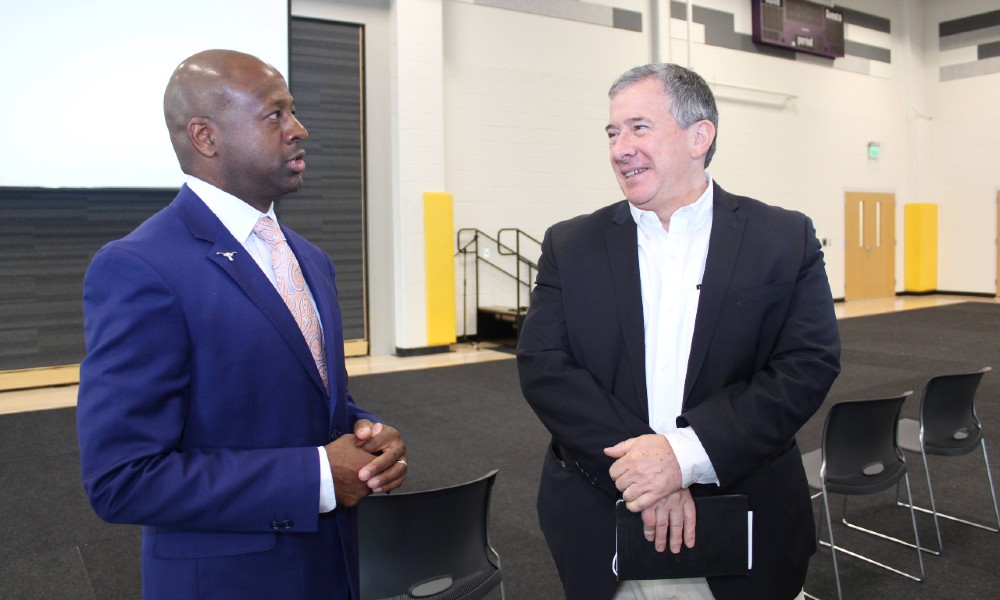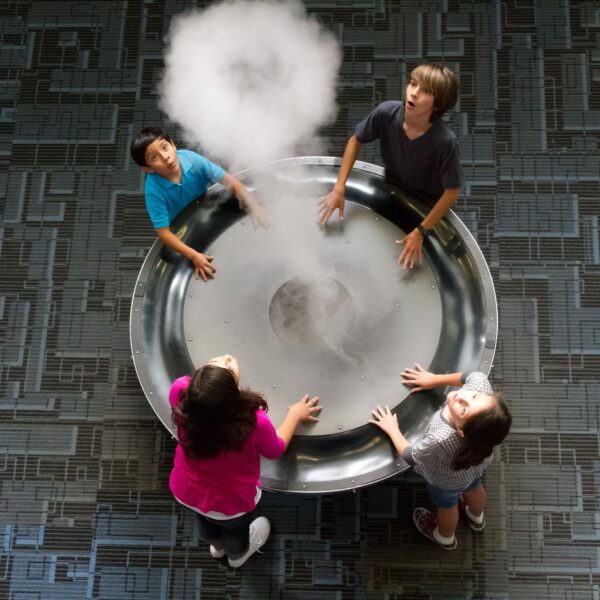Mark Walhimer still remembers the first time he stepped foot in a museum at the age of 7. It was a transformative moment for the boy who would go on to spend his life “Designing Museum Experiences,” which just so happens to be the title of his newly released book. Wide-eyed and impressionable, the youngster strolled into the Yale Peabody Museum’s dinosaur pavilion. “There was this beautiful terrazzo floor with these glass cases and the dinosaur in the middle,” he says, the sound of a child’s awe-struck wonder alive in his delivery. “There was a formality to this, a history to it—like that’s a real dinosaur! I was like, I’m not even sure what I’m looking at, but wow is this beautiful! I want to be part of this!”
As an undergrad majoring in Studio Art at Skidmore College, Walhimer had another “aha” moment that would set in motion a robust career that’s now three decades in: A presentation by the installation artist Judy Pfaff. “Judy, along with a few others, was changing what sculpture was,” he says. “With installation art, the space is the sculpture—you walk into the sculpture. In 1983, this was revolutionary. I walked up to Judy and told her how impressed I was, and that I’d like to work for her. She said, ‘Sure, come and see me.’ That January, she picks me up in her little pick-up truck and takes me to her studio, and it changed my life. That very day I was making sculptures.”
Making things was nothing new for Walhimer who, like many people in the arts, grew up dyslexic, and used art and his hands as ways of expressing himself. “I struggled in school, and that’s part of the reason I’m so interested in museums—I got through school by making things,” he says, speaking today from his home office in Mexico City, where he’s been teaching virtual classes throughout the pandemic. He channeled his creativity in making art and building forts in the backyard of his family’s home in Woodbridge, CT, just outside of New Haven. “When I would tell Judy or other artists these kinds of stories, they’d say, ‘Of course! That’s just the way you get through life.’”

Creating installation sculptures for Pfaff led Walhimer to a fascination in planning museum spaces, and eventually the founding of a company called Museum Planning. The process of creating a new museum is far more than architecture and construction plans, he’s quick to point out. “That part’s relatively straightforward,” he says. “The ‘why are we doing this’ is what takes the most amount of time. Not only do you need to get people in the door, but you also need to think about how you’re going to fund this operation. The building is the easy part. Even the exhibits are the relatively easy part. The really tough part is creating the culture that’s going to do this over and over again, every day of every year.”
Solving that puzzle takes a lot of groundwork and thoughtful conversations.
“Meeting with the mayor, meeting with the community, understanding their needs and how to provide for that—all of that is really where the work is,” Walhimer says. “Because if you’re serving the local communities, the local communities will then be vested in the project. And they’re going to want to give their time, and give financially if it’s possible, so that these can become sustainable organizations.”
When helping to launch the Discovery Science Center in Santa Ana in 1998, for example, Walhimer relocated from New York and hit the streets to talk to families. “There was a main street of Santa Ana at the time with mostly Mexican American communities,” he says. “I started asking questions: ‘Do you know the furniture building down the street? We’re thinking of creating a science museum there. Do you have children? What do you think your children would be interested in at a science center?’ Often the parents would not be English speaking, so they would ask me to speak to the children. The children would then translate for the parent. There would be a comfort level there; ‘OK, this guy is trying to do something for the community.’”

To this day, Walhimer counts this experience as a career highlight. “My first trip there, there were homeless people living in the building. The building was flooded, most of the roof was gone. Over the course of more than two years, we converted that. I’m very proud of that project and what it did for the community: Science became a thing there.”
Walhimer has seen firsthand throughout his career the positive effects museums have on communities far and wide: the ability to bring people together, to inspire, educate and open minds. “I passionately believe in the power of museums,” he says. “I think issues like climate change, mores and civil unrest are going to be addressed through museums. I don’t see another place in society where these issues can be addressed on a community level.”
A current project that Walhimer is pouring his heart into involves the conversion of what were once segregated African American schools into museums and community centers. “A local African American church in Indiana formed a non-profit and contacted me about doing a strategic plan,” he says. “The idea of creating 15 African American museums in formerly segregated schools, in 15 different communities across the US is the part that excites me the most about that project.”


